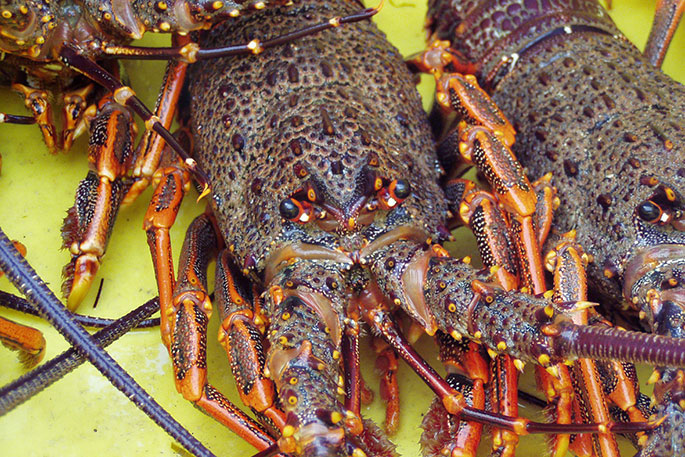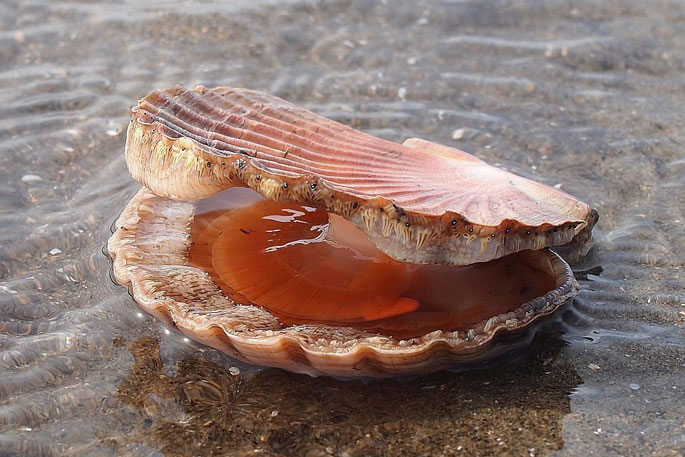Depleted scallop fisheries in Northland and most of the Coromandel are to be closed to allow them to recover.
Oceans and Fisheries Minister David Parker is announcing the closure as part of the twice-yearly review of a selection of fish stocks to support their sustainability.
From April 1, recreational and commercial scallop fishing in the Northland fishery, and the Hauraki Gulf and Coromandel fishery, apart from two defined areas around Hauturu/Little Barrier Island and near the Colville Channel that will provide for a small level of utilisation, will be closed.
The announcement also comes on the heels of Forest & Bird issuing an open letter, calling for the closure of scallop fisheries in Hauraki Gulf, Coromandel and Northland.
'Allowing our scallops to decline towards such critically low levels is a disgrace. It's a symptom of the dire state and poor management of our shared oceans, particularly in the Hauraki Gulf," says Kevin Hague, Chief Executive of Forest & Bird.
At least four iwi and hapū have already taken action to protect tipa (scallops) through tikanga rāhui, initiatives that Forest & Bird strongly supports.
Scallops play an important ecological role in storing carbon and cleaning water. 'The Hauraki Gulf shellfish once daily filtered four and a half times the volume of the Gulf, a critical ecosystem function that has been all but lost,” says Hague.
"Since taking responsibility for the oceans and fisheries portfolio I have been made aware of the parlous state of the scallop fishery," says Parker.
"The fishery in the Nelson-Marlborough region has been closed for years. Reseeding efforts have been unsuccessful."
Scientific surveys of scallop numbers in the Northland, Hauraki Gulf and Coromandel fisheries have confirmed iwi and community concerns that scallop beds in the region are in bad shape.
"I share their concerns. The results of the 2021 biomass survey are alarming."
Parker says many fishers in these areas have reported it is becoming harder to find scallops.
"Removing fishing pressure is an important and immediate measure that can contribute to their ongoing sustainability. It is the responsible action to take.
"A number of factors are contributing to the continued serious decline in scallop numbers including sedimentation, dredging and the use of GPS technology to locate and exploit scallop beds.
"Strong measures are needed to restore these important shared fisheries."
The closures follow a 50 per cent cut to the total allowable commercial catch (TACC) in the Coromandel scallop fishery in 2016. The TACC for the Northland scallop fishery was reduced by 75 per cent in 2020.
In the six-monthly reviews, stocks are prioritised for review focussing on the species that are important to iwi, commercial and recreational fishers, and local communities.
"Where the information suggests a fish stock can sustainably support more harvesting, catch limits can be increased so everyone can benefit from the fisheries. On the other hand, if sustainability is at risk catch limits are reduced to help the stock recover," says Parker.
Seven other fish stocks in this review will have catch limits and settings updated.

They include rock lobster, redbait, and southern blue whiting.
"In addition, hāpuku and bass stocks off the west coast and top of the South Island and Taranaki will have catch limits and allowances set for the first time, and I have agreed to change recreational controls for these stocks."
The amount paid for fish caught commercially above catch entitlement, known as deemed values, will be adjusted for three of the stocks to reflect the market rate and incentivise more accurate reporting.
Summary of changes:
- Scallops, Northland (SCA1) – full closure.
- Scallops, Coromandel (SCA CS) – Partial closure – all areas of SCA CS will be closed apart from two defined areas around Hauturu/Little Barrier Island and near the Colville Channel that will provide for a small level of utilisation.
- Rock lobster, Northland (CRA 1) – decrease total allowable catch
- Rock lobster, Otago and Southland (CRA 7, and 8) – increase total allowable catch
- Hāpuku and bass, West Coast and top of the South Island, and Taranaki (HPB 7 & 8) – set total allowable catch and allowances, decrease total allowable commercial catch
- Redbait, West Coast South Island and west coast North Island (RBT 7) – decrease total allowable catch
- Southern blue whiting, Bounty platform (SBW 6B) – decrease total allowable catch
Further information is available at: https://www.mpi.govt.nz/consultations/review-of-sustainability-measures-2022-april-round/



2 comments
Won't stop some
Posted on 29-03-2022 12:14 | By Yadick
We often go up to Papa-Aroha and the raping and pillaging of scallops up there is unbelievable. People coming out of their boats with sacks of them and the majority undersized. The same with snapper. Share a few around and nobody seems to care. So full of self entitlement.
@Yadick
Posted on 31-03-2022 13:31 | By morepork
If you are seeing this you should report it so that Fisheries can get inspectors there more often than is apparently the case. It is the greed of a few that is destroying the resource for everybody. And I agree with your "self-entitlement" analysis too. Some people think that nothing applies to them except what they want.
Leave a Comment
You must be logged in to make a comment.